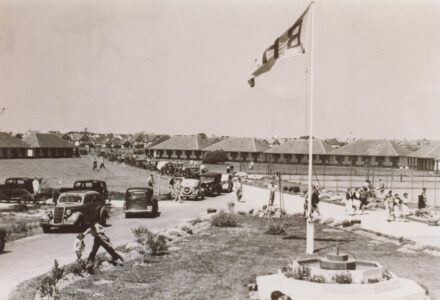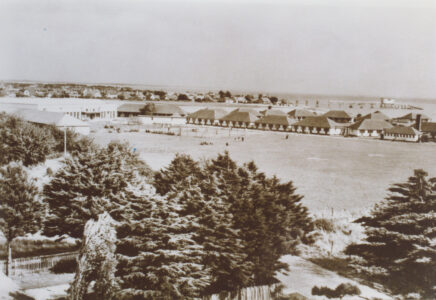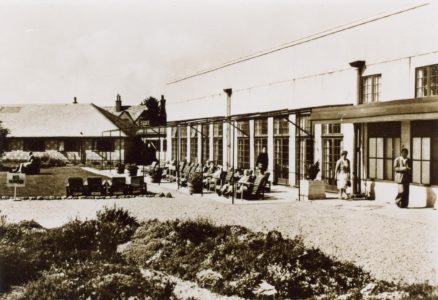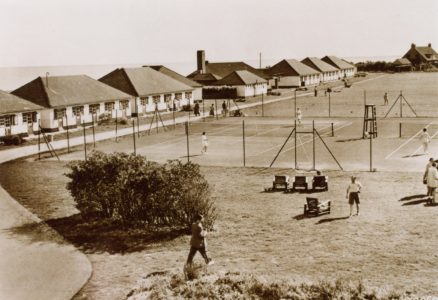
Broadreeds / Pontins photos
In 1932 Joseph Simons bought a piece of land between Grafton Road, James Street, and the Oval Field, including a thatched house called “Broadreeds”, He built a holiday camp there, to accommodate more than 350 guests, with tennis courts, a bowling green and cricket pitch. Adverts boasted brick-built chalets, a restaurant and a dance hall. When Broadreeds Holiday Camp first opened in May 1934 it was already fully booked for July and August and proved popular all through the 1930s.
Between 1938 and 1939 Jewish refugees, mainly girls, were housed at the camp as part of the Kindertransport, which was an effort to rescue children from Nazi-controlled territory.
At the start of the second World War, the camp was used to accommodate a special school for over 200 physically disabled children, evacuated from London. On the night of 19 August 1940, a 13-year-old boy, a teacher and an assistant were killed by a bomb during a German air attack, along with a soldier. Villagers had concerns about why the camp was being used for evacuees because of the position of a searchlight battery just north of the camp and a gun battery at the end of Seal Road, obvious targets for the Germans. All the remaining evacuees were re-evacuated, and the camp was taken over by the Army for the rest of the war.
Broadreeds re-opened on 1st June 1946, now run by Joseph Simons son, Norman. The camp had suffered significantly from erosion even before the war and by this time Broadreeds house and the original dance hall and dining room had been lost to the sea and been replaced by new buildings near the Grafton Road entrance.
The camp continued to be very popular and in 1958, as work on the much-needed sea defences was in its final stages, Norman Simons was granted planning permission to extend the camp northwards, despite opposition from local residents. In August 1962 Broadreeds was sold to Pontins Camp Ltd.
In the years that followed, Pontins made further improvements to the camp, including a heated swimming pool, sauna, solarium, and a new dining room large enough to seat over 1,000 visitors. Central heating was also installed in the chalets for winter months only.
The camp finally closed in 1988 following damage caused by the great storm of October 1987. After demolition, the land remained empty for several years before the current housing estate was built during the late 1990s.


Broadreeds from Bill House tower
View image
Selsey: Broadreeds
View image
